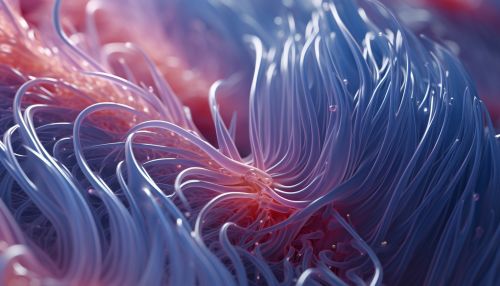Cilia
Overview
Cilia are slender, microscopic, hair-like structures present on the surface of all mammalian cells. They are primarily responsible for locomotion, either of the cell itself or of fluids on the cell surface. In eukaryotes, cilia and flagella together make up a group of organelles known as undulipodia. Cilia are divided into two types: primary cilia, which act as sensory organelles, and motile cilia, which generate movement.


Structure
Cilia are composed of nine pairs of microtubules surrounding a central pair, known as the "9+2" structure. This structure is surrounded by the cell's plasma membrane, which is continuous with the ciliary membrane. The base of the cilium, the basal body, is formed from a centriole, a type of organelle that is involved in cell division and the formation of cilia and flagella.
Function
The primary function of cilia is to move fluid, mucus, or cells over their surface in a uniform direction. In the respiratory system, for example, cilia move mucus and trapped particles out of the lungs, helping to prevent infection and damage. In the reproductive system, cilia move eggs from the ovaries to the uterus. Primary cilia also have sensory functions, detecting mechanical and chemical changes in their environment.
Ciliopathies
Defects in cilia can lead to a group of diseases known as ciliopathies. These diseases can affect multiple systems in the body and can lead to symptoms such as kidney disease, blindness, respiratory problems, and infertility. Some examples of ciliopathies include polycystic kidney disease, Bardet-Biedl syndrome, and primary ciliary dyskinesia.
Cilia in Other Organisms
Cilia are not exclusive to mammalian cells. They are found in a wide range of organisms, including other animals, plants, and even some prokaryotes. In these organisms, cilia have a variety of functions, from locomotion to feeding.
